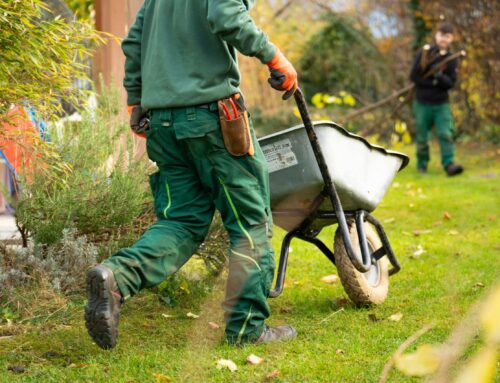A Healthy Landscape Begins with Seasonal Awareness
Trees and shrubs aren’t just a backdrop to your home—they’re living, growing investments that shape your landscape’s health and beauty throughout the year. Knowing how and when to care for them through the changing seasons can mean the difference between vibrant growth and costly damage. Seasonal tree and shrub care is a foundational part of maintaining soil health, managing pests, and supporting long-term plant vitality.
Each season presents unique challenges and opportunities. From soil preparation in early spring to protecting bark and buds through the harsh winter months, effective care requires knowledge, consistency, and the right timing. Whether you’re an experienced gardener or just beginning to explore horticulture, understanding seasonal needs will help you support healthy root systems, prevent disease, and enhance the aesthetic value of your yard all year long.
Spring: Rebuilding Strength and Preventing Infestation
Spring is a time of renewal, and it’s critical to support new growth with expert tree and shrub care techniques. As buds break dormancy, inspect the bark and trunk for signs of fungus, insect infestation, or structural damage from snow and ice. Spring is also when many insects, such as mites and emerald ash borers, become active—an early pest control plan, including horticultural oil treatments or insecticide applications, is essential.
Aerating the soil boosts oxygen levels and supports water absorption after months of compacted snow or heavy rain. Apply slow-release fertilizer and mulch around the root zone, being careful not to mound it against the trunk, which can invite disease. Weed control should also begin now, as invasive species can rapidly take hold. If you’re managing shrubs like azaleas or evergreens, proper pruning can encourage fuller growth while reducing stress on the plant. For comprehensive lawn care, consider integrating a lawn care program that includes soil testing and irrigation adjustments.
Summer: Supporting Growth While Managing Heat Stress
The growing season is in full swing, but intense heat and erratic rainfall can create major stress for your vegetation. Summer shrub care includes consistent watering schedules tailored to your soil type, sunlight exposure, and plant species. Deep irrigation encourages stronger root systems, while surface watering often leads to shallow roots and increased drought vulnerability.
Pest and disease issues peak during the summer. Fleas, mosquitoes, and fungal infections can quickly escalate without active monitoring. Applying targeted fungicide or pest control treatments—especially for species prone to oak wilt or hemlock woolly adelgid—can prevent widespread damage. Continue pruning as needed, especially for shaping hedges and removing diseased or dead wood. Certified arborists recommend inspecting your trees regularly for signs of trunk wounds, bark splitting, or insect damage.
Keep in mind that lawn care services during this time should emphasize mowing height and drought resilience. Programs that incorporate lawn aeration and nutrient monitoring will support both trees and turf by keeping the soil pH balanced and healthy.
Fall: Preparing for Dormancy with Nutrient Boosts
Autumn is about setting the stage for survival through winter. As leaves fall and photosynthesis slows, trees and shrubs redirect their energy toward root development. This is the time to apply a balanced fertilizer that supports root strength, and to conduct soil tests to correct any deficiencies before the ground freezes.
Pruning in the fall should be minimal—just enough to remove dead or diseased limbs and improve accessibility or safety. This avoids stimulating new growth that could be damaged by incoming cold. Fall is also a great time to apply a fresh layer of mulch to regulate soil temperature and moisture as temperatures drop. If you’ve experienced summer infestations or fungal issues, this is your chance to reset and use horticultural oil to smother overwintering eggs or spores.
Fall lawn care programs also play a role. Image Lawn Care, for example, emphasizes programs that prepare both your yard and your ornamental plants for the months ahead, helping reduce springtime pests and strengthening plant immunity during the dormant season.
Winter: Protection and Planning for the Season Ahead
While growth halts during winter, tree maintenance continues behind the scenes. Snow, wind, and ice can create wounds in bark or break limbs, so regular inspections remain critical. If your region experiences heavy snow loads, consider proactive bracing for vulnerable branches or using anti-desiccants to protect evergreens from moisture loss.
Professional tree care in winter often includes structural pruning by an ISA certified arborist. With leaves gone, it’s easier to assess branch placement and correct poor form before the next growing season. Pest control measures may also be taken in milder winter climates to prevent early infestations.
This is also the ideal season to plan ahead—evaluate your yard’s performance over the past year and determine whether you want to add new species, enhance accessibility, or replace aging vegetation. Tree planting in winter may be possible in some climates, particularly for hardy species like pine or oak.
Keep Your Landscape Thriving Year-Round
Seasonal tree and shrub care isn’t just a task—it’s an investment in the long-term health and beauty of your property. Whether you’re managing yard aesthetics, safeguarding against disease, or promoting pollinator-friendly vegetation, each season offers critical opportunities. Partnering with expert tree care professionals or a trusted lawn care program can ensure your landscape thrives in every condition.




